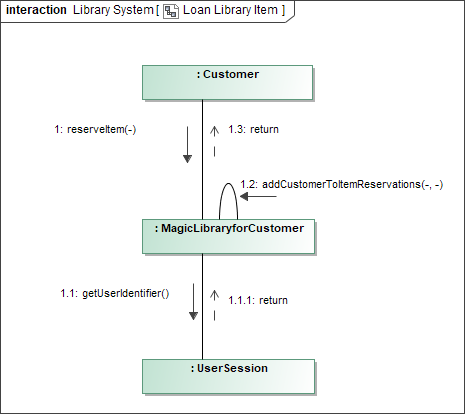Overview
A Communication diagram is a type of Interaction diagram, which falls under the behavioral diagramming family. The Communication diagram is the UML 2.0 version of the Collaboration diagram. It illustrates various static connections between objects, models, and their interactions. It also presents a collaboration that contains a set of instances as well as their required relationships given in a particular context, and includes an interaction that defines a set of messages. These messages specify the interaction between the classifier roles within a collaboration that will serve to achieve the desired result.
A Communication diagram is given in two different forms: at the instance level or at the specification level.
Purpose
A Communication diagram can be used to model the interactions between objects or parts in terms of sequenced messages. It represents a combination of information taken from Class, Sequence, and Use Case diagrams describing both the static structure and dynamic behavior of a system.
Usage
A Communication diagram can be used to:
- model message passing between objects or roles that deliver functionalities of Use Cases and operations
- capture interactions that show the messages passed between objects and roles
- model alternative scenarios within Use Cases or operations that involve the collaboration of different objects and interactions
- model mechanisms within the architectural design of the system
- identify objects, their attributes, and operations that participate in Use Cases.
Summary
Communication diagrams are valuable because they:
- reveal the structural requirements that are necessary to complete a task
- explicitly identify the objects that participate in an interaction
- reveal the interface requirements of the participating classes
- identify the structural changes required to satisfy an interaction
- identify data that passed as part of interactions.
Example of a Communication diagram
Related pages
